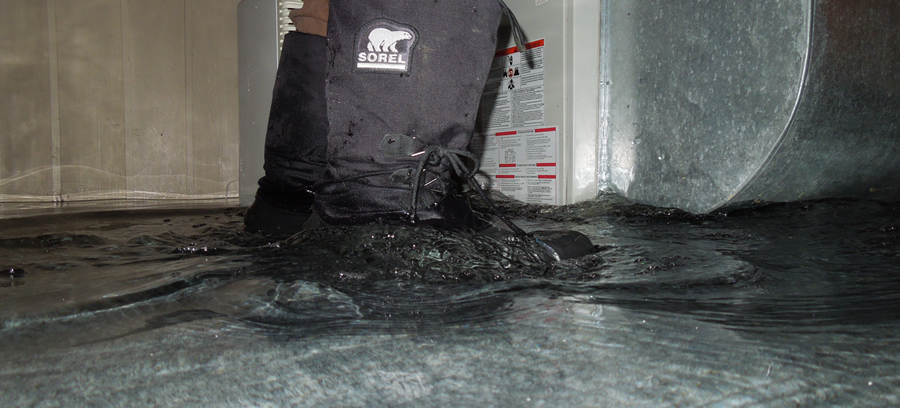Common Basement Leaks & How We Repair Them
Dec 04, 2017
Water can leak into your basement from both the walls and the foundation. Even if your foundation is made from concrete, your basement could still be prone to leaking. A leaky basement could be caused or exacerbated by a breakdown in drainage, hydrostatic pressure over time, or even something known as the clay bowl effect.
Breakdown in Drainage
Just one clogged footing drain can result in a buildup of water pressure along your home’s foundation.
Over time this water accumulation can overwhelm your home’s foundation and basement walls. One clog leads to a buildup of water in other areas along your foundation and suddenly you’re confronting an underwater backfill and high hydrostatic pressure.
Hydrostatic Pressure
Hydrostatic pressure results from water accumulation and pressure in your home’s backfill.
Pressure can move from an overwhelmed backfill to your basement through vulnerabilities in your home’s cracks and joints. The joint linking your basement floor and wall is a very typical vulnerability for basement leaks.
Hydrostatic pressure simply means water pressure, and a buildup of this water pressure in your clogged footing drains can leave pressure and water accumulation with no place to go except into your basement.
Clay Bowl Effect
Your home’s foundation came from removing backfill soil. Unfortunately, the soil that’s left behind after the foundation is laid is more porous than what came before.
It’s entirely possible that your basement is leaking because of this porous soil coupled with the fact that your foundation can sink over time. This sinkage or “settling” can even be along a natural water path.
All of these factors taken together can lead to a leaky basement, especially after it’s just rained or if your cracks and joints allow water accumulation from your backfill into your basement.
How to Fix Leaks
Getting a leaky basement permanently under control depends on streamlining your exterior draining system and properly sealing your home. Exterior excavation might even be called for if the problem is severe enough.
Drain Tile
To repair both floor cracks and cove seepage, the secret is to alleviate the hydrostatic pressure by giving groundwater somewhere else to go. This is accomplished by installing interior drain tile, a system of perforated pipe installed under the basement floor.
Interior drain tile is embedded in gravel and wrapped in filtration fabric to allow drainage & keep the water flowing out. It takes in groundwater through its perforations and carries it to a sump basin where the sump pump discharges it from the basement. When installed properly, interior drain tile requires no maintenance.
Sealing Your Basement
Water can ultimately put sixty pounds per cubic foot of pressure on your basement’s joints and cracks. Over time this pressure could result in leaks and more serious structural damage to your home. The basement waterproofing solution is twofold–seal small cracks along your basement’s exterior and apply a waterproof coating to further weatherproof your home’s exterior.
If you’re noticing leaks or suspect a clogged drain, contact the professionals at ESOG today. Serving Georgia residents and businesses since 2007, ESOG’s professionals can handle any size foundational issue.

